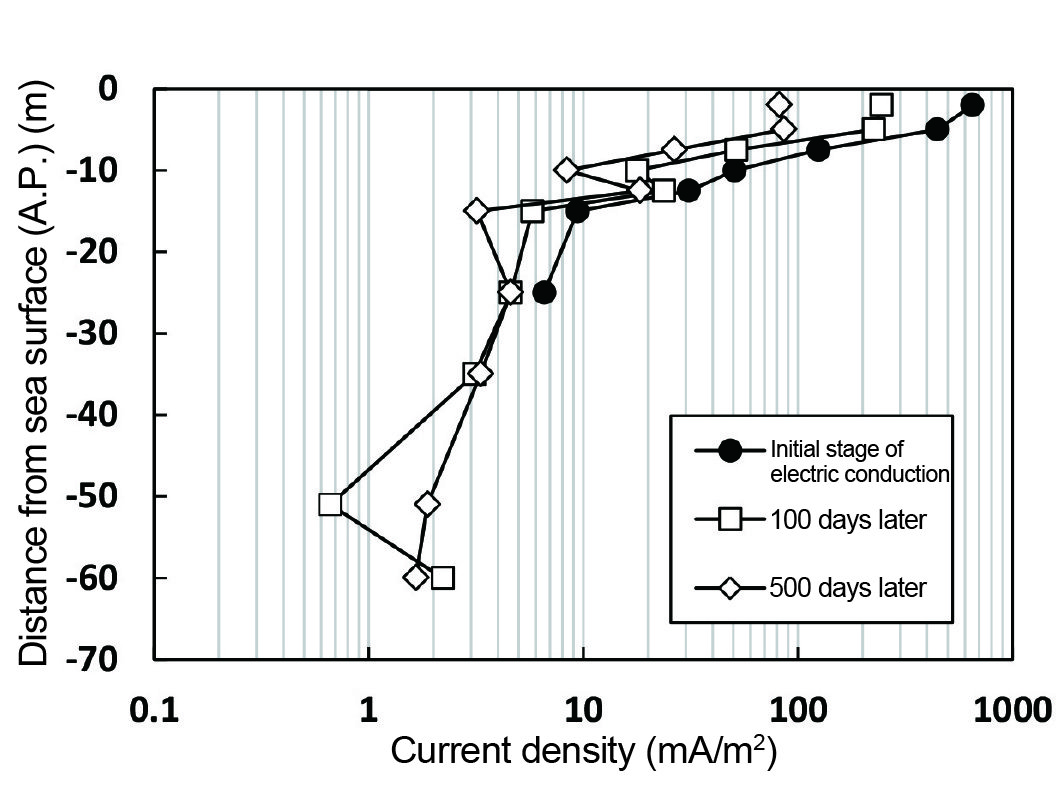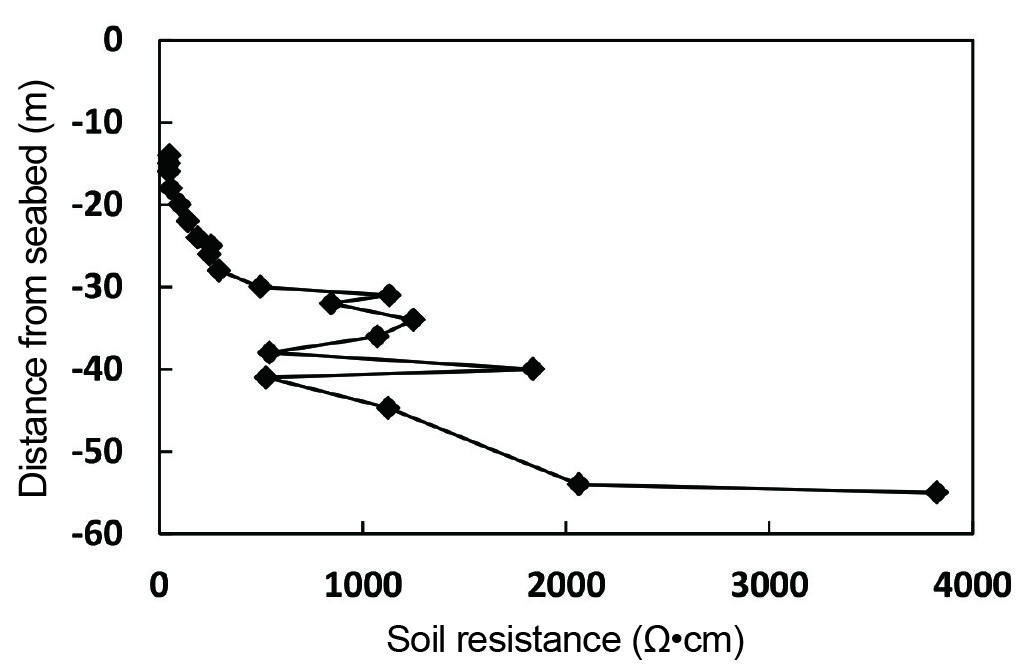Major Research Improvement of cathodic protection design for marine steel structures considering soil properties
In most port steel structures in Japan, treatment to cathodic protection, which is based on a galvanic anode system, is applied to parts that are submerged in seawater when the water level is at the mean low-water level (M.L.W.L.) or lower, and parts which are buried in marine sediment. Although many findings have been obtained regarding the characteristics of cathodic protection, it is difficult to conduct surveys of parts buried in marine sediment, and so the effect of such method is not well understood.
In this research, we focused on the cathodic protection characteristics of parts buried in marine sediment and, based on on-site survey results, attempted to assess protective current density for such parts. In this on-site survey, we investigated the cathodic protection characteristics of parts buried in marine sediment of the single-pile area of the taxiway which is connected to runway D of Haneda Airport where the footing depth is very deep (approximately 60 m). We also investigated the relationship between cathodic protection and soil electric resistivity (soil resistivity), which had been calculated using boring samples from areas near the on-site survey location. In addition, we used finite element (FEM) analysis to analyze the distribution of the electric potential and current densities of piles, and then investigated a design method for cathodic protection taking soil resistivity into account.
The results of this research are summarized below.
We confirmed that electric potential remains at a sufficient level to prevent corrosion for approximately 120 days even at 55 m below the seabed and that the cathodic protection sufficiently prevented corrosion even under marine sediment.
We sampled soil in the ground survey. Then, we confirmed the correlation between soil resistance which had been measured for the sample and the protective current which flows into steel material (Figure 1 and 2).
In this survey, we took soil resistance under marine sediment into account and used the FEM method to analyze the electric potential and density distribution when cathodic protection was applied to the piles. The results were relatively close to the actual measurements. The method of FEM analysis with parameter of soil resistance under marine sediment suggests that it could contribute to a highly reasonable cathodic protection design.

(Left) Figure 1.
Depth distribution of inflow-current densities

(Right) Figure 2.
Depth distribution of soil resistance



